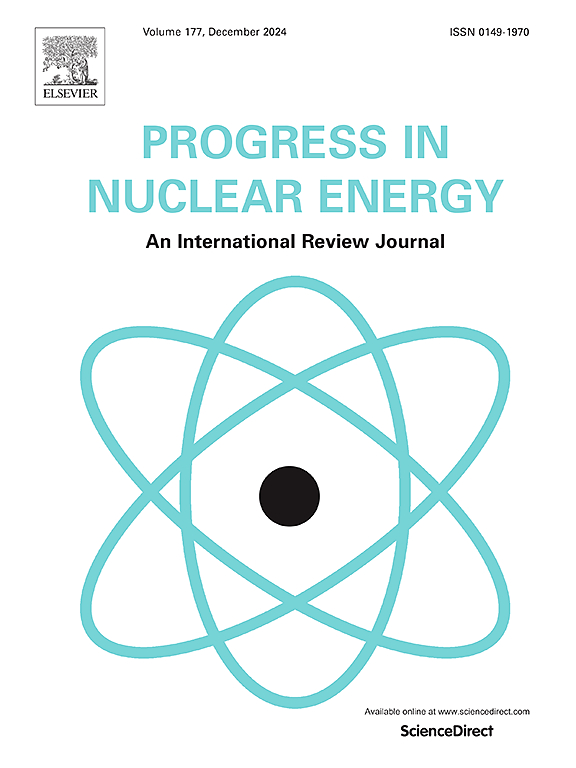利用介子散射断层成像技术对核废料容器中的气泡进行三维成像
IF 3.2
3区 工程技术
Q1 NUCLEAR SCIENCE & TECHNOLOGY
引用次数: 0
摘要
由于永久的辐射暴露,储存在沥青容器中的放射性废物会产生各种气体,这可能对储存设施造成重大的安全和处理问题。本文介绍了一种利用介子散射层析成像技术检测和绘制气泡的三维成像方法。我们的研究表明,该技术可以在200 L沥青化废物容器中暴露27天后,以95%的置信度检测到小至0.55 L的气体体积。我们的方法是通用的,可以应用于各种废物管理方案和其他行业的气体和空隙控制。本文章由计算机程序翻译,如有差异,请以英文原文为准。
3D imaging of gas bubbles in nuclear waste containers via Muon Scattering Tomography
Due to perpetual radiation exposure, radioactive waste stored in bituminized containers can generate various gases, which may pose significant safety and handling concerns for storage facilities. This paper introduces a novel 3D imaging method that uses muon scattering tomography to detect and map gas bubbles. Our study demonstrates that this technique can detect gas volumes as small as 0.55 L at a 95% confidence level after 27 days of muon exposure in a 200 L bituminized waste container. Our approach is versatile and can be applied to various waste management scenarios and other industries for gas and void control.
求助全文
通过发布文献求助,成功后即可免费获取论文全文。
去求助
来源期刊

Progress in Nuclear Energy
工程技术-核科学技术
CiteScore
5.30
自引率
14.80%
发文量
331
审稿时长
3.5 months
期刊介绍:
Progress in Nuclear Energy is an international review journal covering all aspects of nuclear science and engineering. In keeping with the maturity of nuclear power, articles on safety, siting and environmental problems are encouraged, as are those associated with economics and fuel management. However, basic physics and engineering will remain an important aspect of the editorial policy. Articles published are either of a review nature or present new material in more depth. They are aimed at researchers and technically-oriented managers working in the nuclear energy field.
Please note the following:
1) PNE seeks high quality research papers which are medium to long in length. Short research papers should be submitted to the journal Annals in Nuclear Energy.
2) PNE reserves the right to reject papers which are based solely on routine application of computer codes used to produce reactor designs or explain existing reactor phenomena. Such papers, although worthy, are best left as laboratory reports whereas Progress in Nuclear Energy seeks papers of originality, which are archival in nature, in the fields of mathematical and experimental nuclear technology, including fission, fusion (blanket physics, radiation damage), safety, materials aspects, economics, etc.
3) Review papers, which may occasionally be invited, are particularly sought by the journal in these fields.
 求助内容:
求助内容: 应助结果提醒方式:
应助结果提醒方式:


